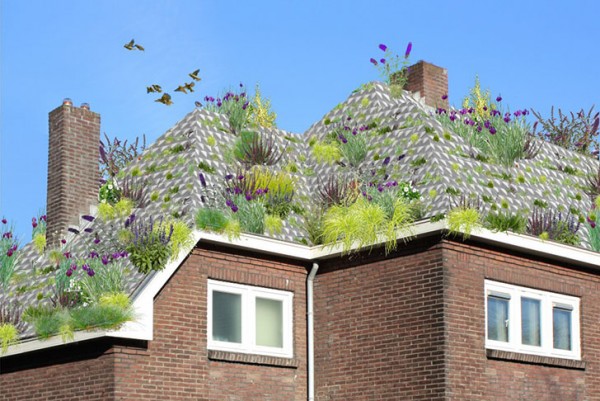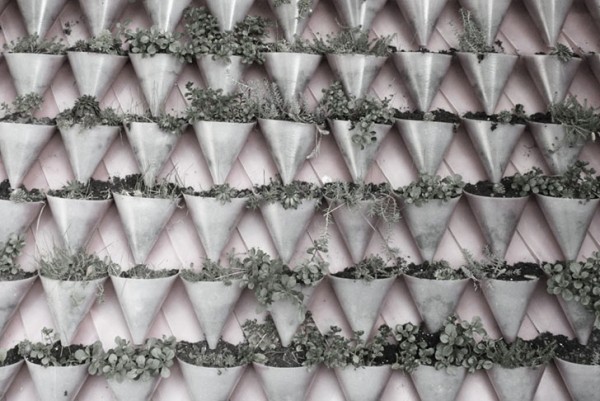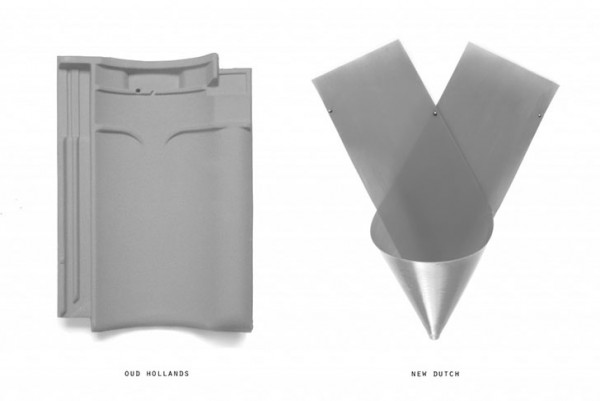There are many kinds of green roof technologies to choose from for those looking to reduce their energy bills and overall carbon footprints. But one feature that most all green roofs share are their relative flatness. Those with steeply pitched roofs often have trouble battling with gravity to keep the growing medium secured in place.
For these clients, the Dutch design firm Roel de Boer has created a new lightweight roofing tile that can be retrofitted on existing sloping roofs, which are common in many cities around the Netherlands. The two-part system, called Flowering City, includes a base tile that can be attached directly onto any existing roofing tile and an inverted cone-shaped pocket in which soil or other growing medium can be placed, allowing plants to grow upright.

Both parts of the system are made of durable recycled plastic to help reduce the weight of the roof, which can often be a limiting factor for conventional, flat green roofs. On rainy days, stormwater is funneled into the pockets and is absorbed by the plants. The excess rain slowly drains away, but only after being delayed briefly by the pockets and filtered of contaminants, thus reducing the peak water loads on wastewater treatment plants.

Because the pockets of earth are each isolated from each other, the thermal insulation properties of the Flowering City tiles will not be as efficient as a flat green roof with a continuous soil layer. Still, Roel de Boer says its tiles provide extra layer to trap heat in the winter and help regulate temperatures within the building.

In addition to being a home for aesthetically pleasing flowers, the system can also be used by some animals, such as birds, as a new habitat, the company says. The higher altitude of the roof, the designers say, can help keep some small animals safe from predators and from other human contact, which can contribute to greater biodiversity in cities and suburbs.
The presence of plants also enhances air quality around the buildings and also absorbs excess noise, adding to the quality of life if the Flowering City system is expanded across an entire neighborhood. “Our homes are no longer blockages within the ecosystem, but stepping stones for wildlife in the city,” the company says.